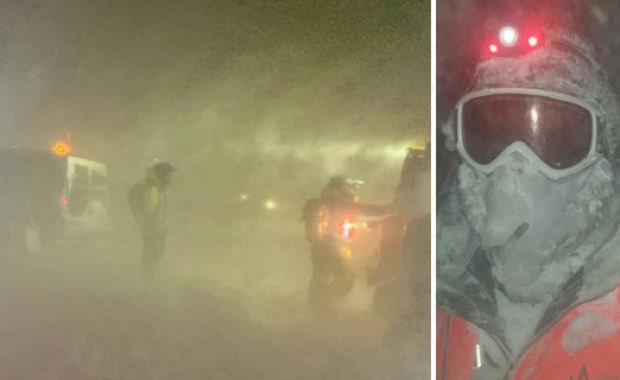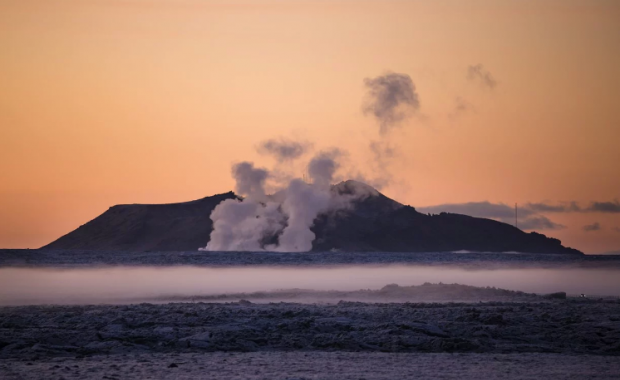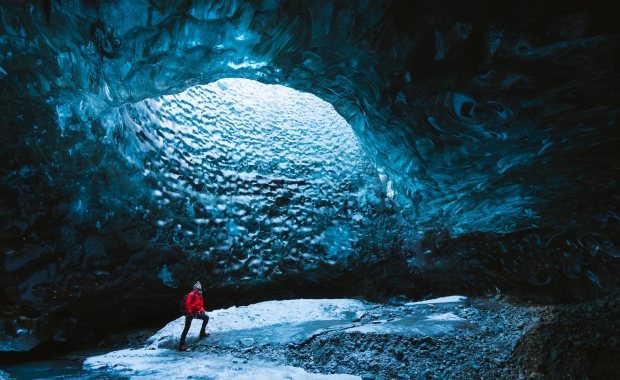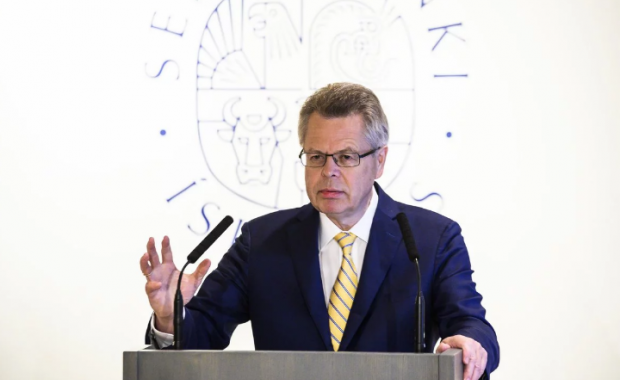The eruptions in Krafla in North East Iceland, which began in December 1975, were one of the largest volcanic eruption in modern Icelandic history. The eruption, which came from the magma chamber of the Krafla volcanic system, lasted with several pauses for almost nine years, during which time the system erupted a total of nine times.
The eruption, which is known as “The Fires of Krafla” produced a 36 sq. km (13.9 sq. m) lava field. To put this into context, the lava field produced by the 2014-2015 Holuhraun eruption North of Vatnajökull glacier is 85 square km (32 sq. m).
Read more: NASA team searching for landing sites on Mars in North East Iceland
Nine years of volcanic activity
The Fires of Krafla had begun with increased seismic activity in the second half of 1975, which allowed scientists and engineers who were working on the geothermal power plant by the mountain Krafla, Kröfluvirkjun, just north of the popular geothermal area Leirhnjúkar, to anticipate and predict the eruption. The first eruption, which began shortly before noon on December 20 1975, lasted only a few hours.
Read more: The huge Bárðarbunga volcano in northern Vatnajökull glacier might be gearing up for an eruption
In the coming years periods of calm were broken up by activity as magna was pushed from shallow magma chambers into the fissure swarm, accompanied by earthquakes, increased geothermal activity and volcanic eruptions. A total of 17 separate volcano-tectonic events, including 9 eruptions with lava flowing above ground, took place until the activity ceased on September 18 1984.
Compared to the recent activity in Bárðarbunga
The most recent volcanic activity in Iceland, the activity in Bárðarbunga caldera in Vatnajökull glacier, has been compared to the Fires of Krafla. The last eruption in the Bárðarbunga system was the 2014-2015 Holuraun eruption north of Vatnajökull glacier.
Geologists have argued that the Bárðarbunga and Krafla systems behave in similar ways, in drawn out episodes which include several different eruptions, seperated by episodes of inactivity during which the central magma chamber is re-filled with magma from the Earth's mantle. According to this theory the Holuhraun eruption was only a small part of a larger series of events which could still be underway. The Bárðarbunga volcano is one of the largest in Iceland, and scientists have warned that an eruption from Bárðarbunga could dwarf recent eruptions, including the 2010 Eyjafjallajökull eruption, which paralyzed air-traffic in Europe.
The eruptions in Krafla in North East Iceland, which began in December 1975, were one of the largest volcanic eruption in modern Icelandic history. The eruption, which came from the magma chamber of the Krafla volcanic system, lasted with several pauses for almost nine years, during which time the system erupted a total of nine times.
The eruption, which is known as “The Fires of Krafla” produced a 36 sq. km (13.9 sq. m) lava field. To put this into context, the lava field produced by the 2014-2015 Holuhraun eruption North of Vatnajökull glacier is 85 square km (32 sq. m).
Read more: NASA team searching for landing sites on Mars in North East Iceland
Nine years of volcanic activity
The Fires of Krafla had begun with increased seismic activity in the second half of 1975, which allowed scientists and engineers who were working on the geothermal power plant by the mountain Krafla, Kröfluvirkjun, just north of the popular geothermal area Leirhnjúkar, to anticipate and predict the eruption. The first eruption, which began shortly before noon on December 20 1975, lasted only a few hours.
Read more: The huge Bárðarbunga volcano in northern Vatnajökull glacier might be gearing up for an eruption
In the coming years periods of calm were broken up by activity as magna was pushed from shallow magma chambers into the fissure swarm, accompanied by earthquakes, increased geothermal activity and volcanic eruptions. A total of 17 separate volcano-tectonic events, including 9 eruptions with lava flowing above ground, took place until the activity ceased on September 18 1984.
Compared to the recent activity in Bárðarbunga
The most recent volcanic activity in Iceland, the activity in Bárðarbunga caldera in Vatnajökull glacier, has been compared to the Fires of Krafla. The last eruption in the Bárðarbunga system was the 2014-2015 Holuraun eruption north of Vatnajökull glacier.
Geologists have argued that the Bárðarbunga and Krafla systems behave in similar ways, in drawn out episodes which include several different eruptions, seperated by episodes of inactivity during which the central magma chamber is re-filled with magma from the Earth's mantle. According to this theory the Holuhraun eruption was only a small part of a larger series of events which could still be underway. The Bárðarbunga volcano is one of the largest in Iceland, and scientists have warned that an eruption from Bárðarbunga could dwarf recent eruptions, including the 2010 Eyjafjallajökull eruption, which paralyzed air-traffic in Europe.







